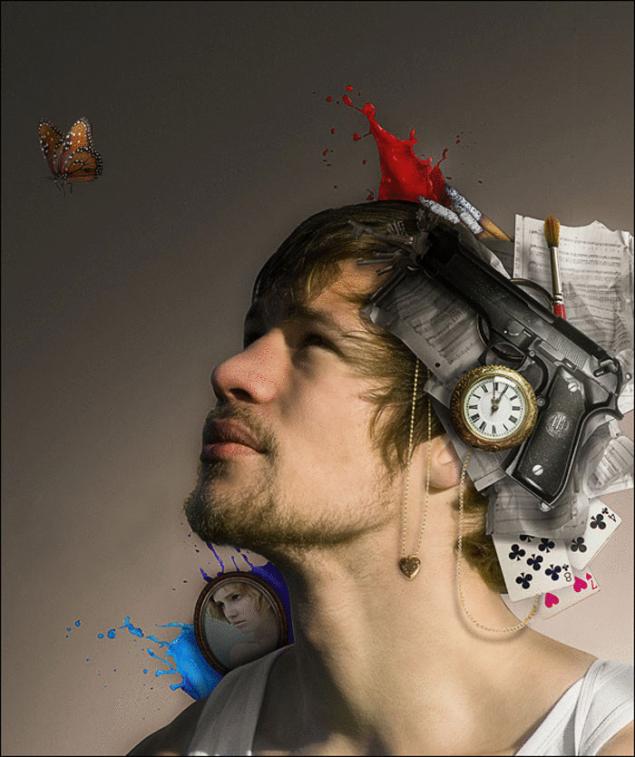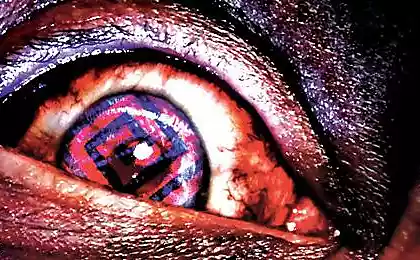468
5 ordinary, everyday things that make us “brain glitches”:

If we have, for any reason, without prior knowledge, invite our mind to reflect on the four-dimensional hypercubes, quantum mechanics or an infinite totality – he will revolt. And will be right. However, with regard to the perception of more or less mundane objects of everyday life – it's where our gray matter normally does. With a few glaring exceptions.
In this article you will find five ordinary, everyday things, oddly enough, cause we have “brain bugs”:
Door
Have you ever happened to enter the room with a purpose (to take something, for example), and then completely forget why you came? It turns out that the reason for these strange memory lapses lies... in the doorway.
Psychologists from the University of Notre Dame (near Chicago, USA; approx. mixstuff.ru) found that when passing through a doorway in the mind is triggered, conventionally called "event boundary" that separates one set of thoughts and memories from another, just like the scenes in the movie.
Your brain automatically "sends to the archive" the thoughts that owned you in the previous room, and clears space for new ones. "Events" usually help organize our thoughts and memories, as we constantly move and switch to a new task.
But when we try to remember why I came... that was going to do... or find... may be difficult.
Audio signals
What annoys you more: a Wake-up call, car horn, stuck in a traffic jam or a reminder of your cell phone, that he finishes charging? None of these sounds caressing our ears. These audio signals have become a kind of soundtrack of the modern world, but each of them continues to annoy us – because it is a small “brain glitch”.
Evolution is not accustomed us to such audio signals, so we're trying to realize. Natural sounds are created by the transfer of energy, often from the impact of one object on another, as in a drum battle. In this case, the energy is transferred into the drum and then gradually dissipates, and the sound gradually ceases.
Our system of perception of the information uses the extinction of the sound to understand what is happening – what sounds and why. And the modern sounds – it's like a car that was traveling 60 miles per hour and instead of slowly slow down, suddenly hit the wall. The sound does not change, does not cease and our brain can not understand what it is and where it came from.
Photos
With photos a similar story. As a grandmother who learned to use the Internet, but to him and not used, we constantly take pictures, but subconsciously our brains are still not able to separate them from the objects or people they depict.
For example: Studies have shown that if a person offer to throw Darts at the photo with the image where nothing is connected, its accuracy will be much lower than if the same purpose it to provide a photo of Hitler or personal worst enemy.
In another experiment it was found that if people ask to cut into small pieces of pictures associated with childhood memories, he may be sweating.
Since we have over a million years of practice, our brains are still unable to distinguish appearance from reality.
Phones
You happens that you feel the phone vibrate, took it, and with a puzzled look at the lifeless screen? If you, like most people occasionally experience these "phantom vibrations", it is because your brain makes the wrong conclusions, trying to organize the chaos of your life.
Poor brain is constantly bombarded by information of all kinds. He has to filter the useless noise and to isolate important signals. In prehistoric times, our ancestors always took the curves of the branches over the serpents.
Today, the brain incorrectly interpreterpath everything from the rustle of clothes to murmur in the stomach, and hastens to tell us that we are called, or texted me.
Exactly the same happens and the illusion of a vibrating phone.
Wheel
Noticed that sometimes in the movies it seems like the wheels of a car rotate in the opposite direction? This is because the camera captures still images with a certain frequency, and the brain fills in the intervals between the images, creating the illusion of continuous motion between the similar frames. If the wheel does most of the traffic between one and the other frame, then the most obvious for the brain the direction of movement is opposite, since this direction suggests the minimal difference between frames.
However, the effect of rotating in the opposite direction of the wheels can occur in real life. The main theory explaining this phenomenon is as follows: the brain perceives motion much the same as the camera – in a series of static images.
That is, our brain makes its own "movie" about the outside world, but the footage in this "movie" are replaced are not always fast enough to see the wheels spinning in the right direction.
source
Source: /users/87
Nissan and BMW ready to work together with Tesla to develop electric charging stations
Spanish scientists —prospects of geothermal energy























